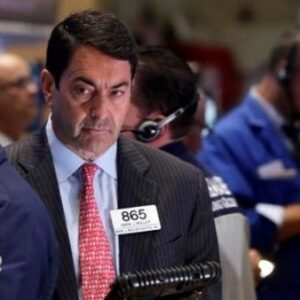So, how do you get people back onto the trading floor after a pandemic?
The buyside. The sellside?
And will they come?
That’s the issue again facing the New York Stock Exchange next week as it begins the re-opening of its physical trading floor in New York City and the Cboe a mere week later as they get ready to re-open their doors. It faced a similar issue back in 2000 in trying to get the buyside to communicate directly with the floor brokers.
But unlike 2000 everyone is home and away from the floor.
Sounds like a daunting task.

Maybe not as Traders Magazine has learned people are ready to go back to their “home-away-from home” – their trading desk or floor. Whether it was a buysider, floor broker or exchange executive, going back to natural executions environment where people are present is a good thing as long as safety precautions are taken.
As previously reported by Traders Magazine and others, New York Stock Exchange President Stacey Cunningham, will re-open its iconic trading floor to select people beginning on May 26th. The exchange closed its physical trading floor on March 23 – days after a floor trader and a NYSE employee tested positive for the coronavirus. The exchange opted to go all electronic since then.
But that was then, and this is now. Time to go back to work.
And the NYSE wants to get back to the crucial business at hand – trading and contributing to the local New York and US economies. And exchange appears to have the proper safety protocols in place.
So, who goes first?
Cunningham said smaller independent floor brokers will be the first to return in order to “get back to work” and be able to earn a living again” as they have been deemed as having the greatest need. These floor traders will be barred from taking public transportation, will have to wear face masks and will follow “strict social-distancing requirements,” she added.
Also, anyone entering the NYSE’s historic building on Wall Street in Manhattan will be screened and have to take temperature checks. They will also sign a risk waiver acknowledging they could be at risk being on the floor.
Cunningham said adjustments will be made on the trading floor to give each trader their own workspace. She left open the possibility of the NYSE taking further precautions if there is a resurgence in coronavirus cases.
“We will enforce social distancing strictly,” Cunningham said. “And there will be a learning curve for all us as we re-open.”
For her complete statement, please click here:
But to get to the exchange, one should not take public transportation. Michael Blaugrund, the chief operating officer of the NYSE, said a decision was made to respect the New York Governor Andrew Cuomo’s PAUSE order and to reserve public transportation capacity for front line workers only.
“We are going to remove the density that we would introduce into that situation by using other methods. But we have been in contact with the MTA, and they are doing extraordinary work to ensure that the public will be safe, so as soon as the governor’s order is lifted, or employees and other floor personnel will begin using the MTA,” Blaugrund said.
According to a source familiar with the matter, there will be deep cleaning of the exchange over the Memorial Day weekend for the open and then on a continuous nightly basis thereafter.

But is it enough?
Yes, it is for Mark Muller, Founder, CEO and President of Muller Equities, a NYSE floor broker. Muller told Traders Magazine that his firm will be back on the floor and ready to trade on Tuesday, May 26th.
“We will be one of the firms going back with limited staffing as will the other firms returning will be,” Muller said.
Muller added that in his view, the NYSE “has, will and continue” to provide a clean and safe workplace for all member firms for as long as it takes until the pandemic reaches a conclusion.
The source added the floor broker firms have been assigned headcount levels and it is up to them to allocate those spots.
“Roughly 25% of the normal floor community population will return on Tuesday,” the source said.
NYSE floor brokers will have the ability to use all of the order types and capabilities typically available via their hand-held devices, including the ability to enter D Orders.
Verbalizing interest at the point of sale will not be available.
And the buyside is also ready. One West Coast buysider who requested anonymity said that he didn’t know which brokers would be present on the floor but that the return of the D Quotes they manage will be a positive step and one he is happy about.
“It does baffle me why a similar process (D quotes) can’t be automated,” the buyside trader began. “But I’m certainly not against reopening things and the floor is as good a place to start, as any. There is some concern that reintroducing the closing process with limited staffing may present capacity concerns. I do feel that folks should manage their expectations on closing liquidity opportunities and understand the experience may not be like pre COVID levels.”
Without Designated Market Makers on the Floor, the process that has been in place since March 23rd will continue, however, Floor Broker order types will now be included. D Orders are eligible to participate in both DMM and Exchange-facilitated auctions.
Verbal interest, including crosses, will not be permitted in this phase of the re-opening.
According to the exchange, without DMMs on the floor, the auction process that has been in place since March 23rd will continue, however, Floor Broker order types will now be included. D Orders are eligible to participate in both DMM and Exchange-facilitated auctions.
And away from New York in the Windy City, Cboe Global Markets also plans to re-open its doors on June 1. And open outcry trading, long the exchange’s hallmark, will continue, according to Ed Tilly, chairman, President and Chief Executive Officer at Cboe Global Markets.
“As we’re contemplating our re-open, the process isn’t quite the same as the shutdown. “We’ve been aligning all the units back together for weeks,” Tilly explained. “We’ve been in communications with companies, setting up and conducting weekend testing and getting our organizational processes in line to get everyone back safely. The health and safety of our workforce is paramount.”
Overall, as a part of the broader trading industry, Tilly said he and his competitors have locked arms and worked together to keep the markets running smoothly. And the death of the trading floor, as some pundits and others have contemplated, is not in his future playbook.
“As we evolved into the hybrid model we have now, cry for closing the floor was loud. But we’ve maintained our customers get to choose how to trade – whatever the service is – not us. We’ll answer the customers’ needs and now they say they want the outcry.”
Tilly agrees with other exchange executives that having a human element on a physical trading floor is a plus for the marketplace. Floor brokerages, he said, add “huge value” as there is no better service than someone acting on one’s behalf.
“When you can replicate that value with technology, then fine. But until then, open outcry is a great value add,” Tilly said. “The more risky the trade, the more the need for a broker. We’ve observed this time and time again and can’t wait to re-offer this service to customers.”
The following article originally appeared in the May 2000 issue of Traders Magazine
Getting the Buyside Back to the NYSE Trading Floor
Buy-side traders have a new electronic incentive to trade directly with NYSE independent floor brokers.
The two groups don’t conduct much business with each other, but a new technology company hopes to change that.
New York-based Gateway Financial Technologies is creating a network of independent floor brokers, allowing them to communicate electronically with both their buy-side and sell-side customers.
Gateway has deployed technology that bridges the gap between the messaging protocol used by the New York Stock Exchange and that used by a growing number of trading desks.
Founding members of Gateway include New York’s Javelin Technologies; the Reston, Va.-based network company, Transaction Network Systems; and NYSE floor broker A.W. Bertsch. AutEx, a Thomson Financial company which operates TradeRoute, the FIX-based order routing network, is a strategic non-equity partner.
Gateway will run a service bureau that makes more forms of electronic communication possible between the Big Board and some institutions.
The NYSE uses CMS, the Common Messaging Protocol, to enable order routing between member firms on and off the floor. Advanced buy-side desks use FIX, the Financial Information Exchange protocol, to route orders to the sellside. Gateway will run a service bureau that utilizes technology from FIX leader Javelin Technologies to enable CMS to talk to FIX.
The new company plans to find its customers among the approximately 300 independent floor brokerages at the NYSE. Those recently signed include Bertsch, 508 Securities, J.M. Duryea, and the Griswold Company. Two-dollar brokers traditionally represent commission house brokers such as Merrill Lynch, but some work directly with buy-side desks. That’s where TradeRoute comes in.
TradeRoute is a FIX-enabled order routing network that connects about 550 buy-side desks with 350 sell-side desks. Much of the order flow into the Gateway network is expected to come from this channel. The CMS-FIX link will effectively allow the majority of NYSE floor brokers to plug into the sprawling TradeRoute for the first time. Currently, Bertsch is the only NYSE floor broker on the network.
TradeRoute customers will not pay additional charges to access the floor brokers. Buy-side users, on the other hand, must be sponsored by a floor broker.
Many of TradeRoute’s sell-side customers are also NYSE-member commission house brokers. Most route orders to the floor via the NYSE’s Broker Booth Support System (BBSS), using the CMS protocol.
Their need for another route is questionable. Gateway chief executive John Petschauer, previously director of technology at the NYSE’s trading systems division, concedes that the largest potential user pool is on the buyside. But he noted that Credit Suisse First Boston and Fidelity Capital Markets have signed on to use the service.
By most accounts, direct trading by the buyside with floor brokers makes up no more than three or five percent of the total order flow on the floor. But the efficiency of a direct link could boost that.
At least one trader at a significant buy-side firm is cautiously optimistic about the Gateway scheme. “It has the potential to be an important development,” said Terry Goodwin, head trader at Goldman Sachs Asset Management. “There are certain instances where direct electronic access to the floor will make the process faster and more expedient. But you have to look at it on a trade by trade basis.”






